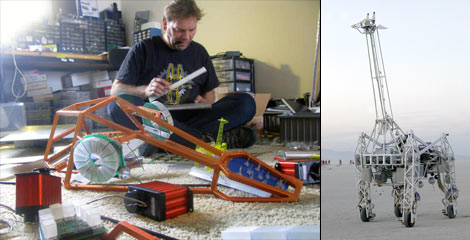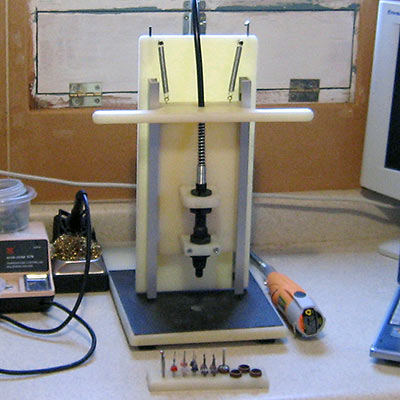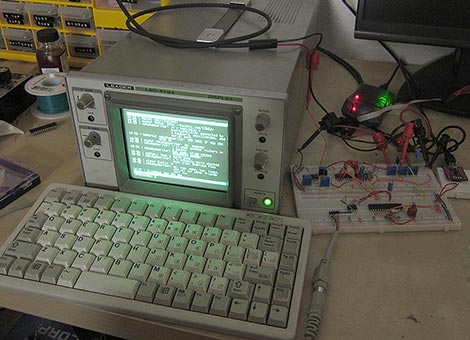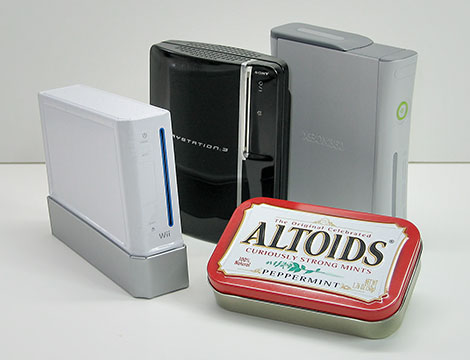
If you’ve had the opportunity to attend the annual Bay Area Maker Faire, you’ve likely encountered Russell the Electric Giraffe. Modeled after a small Tamiya walking toy scaled up to the height of an actual giraffe, Russell was created by [Lindsay Lawlor] in 2005 originally as an “art car” providing a better vantage point from which to enjoy the Burning Man arts festival. In the intervening five years, the Electric Giraffe has enjoyed face time in dozens of parades, trade shows, magazines and television appearances.
Scattered about [Lawlor’s] living room floor at the moment are the giraffe’s dismantled steel skull and several massive Torxis servos (the red boxes in the photo above) — Russell is being upgraded. One of [Lawlor’s] goals in returning to Maker Faire each year is that he not simply present the same exhibit time and time again; the robot is continually evolving. Initially it was little more than a framework and drivetrain, and had to be steered by bodily shoving the entire 1,700 pound beast. Improvements to the steering and power train followed, along with a “skin” of hundreds of addressable LEDs, cosmetic improvements such as a new paint job, and technological upgrades like interactivity, radio control and speech. His goal this year is to bring expressive animatronic movement to the giraffe’s head and jaw, hence the servos, push rods and custom-machined bits currently strewn through his living space-cum-laboratory.
Continue reading “Giant Robotic Giraffe Getting A Giant Robotic Facelift” →

















